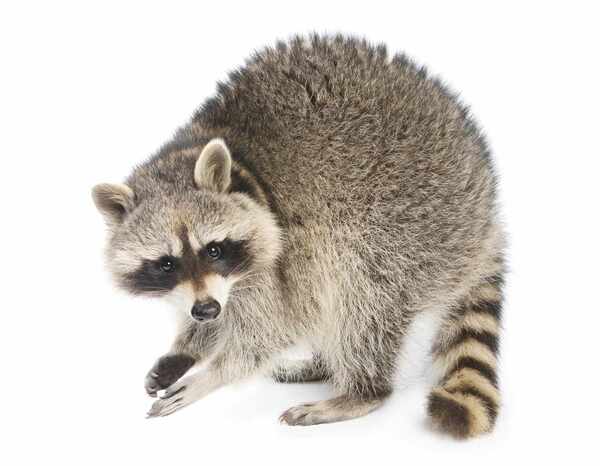Raccoons (Procyon lotor) are one of the most adaptable and resourceful mammals, known for their distinctive black mask-like facial markings and their intelligence. As omnivores, what raccoons eat can vary greatly depending on their environment, season, and the availability of food. In this article, we will explore the diverse diet of raccoons, their feeding habits, and the factors that influence their food choices.

Raccoons are opportunistic feeders, meaning they will eat almost anything they can find. Their omnivorous diet consists of a wide range of foods, including plant matter, insects, small animals, and even human food scraps. What raccoons eat can vary based on their environment, but they are particularly known for their ability to adapt and thrive in urban areas where food sources are plentiful.
Despite being omnivores, raccoons often consume a significant amount of plant material. They have been observed foraging for fruits, vegetables, and seeds. Some of the common plant-based foods that raccoons eat include:
Fruits: Apples, grapes, berries, cherries, and other fruits are a staple in a raccoon's diet, especially when they are in season.
Vegetables: Raccoons will also eat a variety of vegetables, such as corn, peas, carrots, and leafy greens like lettuce.
Nuts and Seeds: Raccoons enjoy seeds and nuts, including acorns, walnuts, and sunflower seeds, which they may find in forested or urban areas.
Raccoons are opportunistic carnivores and will often hunt small animals for protein. They are skilled hunters, using their dexterous paws to catch prey. Some of the animal-based foods that raccoons eat include:
Insects and Bugs: Insects, such as beetles, caterpillars, and ants, are common prey for raccoons. They will also dig in the soil for earthworms and other invertebrates.
Small Vertebrates: Raccoons will hunt small mammals, birds, eggs, frogs, and even fish. They are known to raid bird nests and catch fish in shallow waters.
Carrion: Raccoons are scavengers and will feed on the carcasses of dead animals when available.
| Food Type | Examples |
|---|---|
| Fruits and Vegetables | Apples, grapes, berries, cherries, corn, peas, carrots, lettuce |
| Insects and Bugs | Beetles, caterpillars, ants, earthworms, moths, grasshoppers |
| Small Animals | Birds, eggs, small mammals, frogs, fish |
| Carrion | Dead animals, including small mammals, birds, and reptiles |
| Human Food | Leftovers, bread, pizza, fruits, packaged snacks |
| Pet Food | Dog or cat food left outside |
| Nuts and Seeds | Acorns, walnuts, sunflower seeds |
This table provides a concise overview of the various foods that raccoons consume depending on their environment and the availability of resources. By understanding what raccoons eat, we gain insight into their versatile diet and impressive adaptability to both wild and urban ecosystems.
Raccoons are notorious for their adaptability to urban environments, where food sources are often abundant. In cities, what raccoons eat often includes food scraps left behind by humans. These scavengers have learned to rummage through garbage cans, dumpsters, and compost bins for easy meals. Some of the common urban foods that raccoons eat include:
Human Food: Raccoons often eat leftovers such as pizza, bread, fruits, vegetables, and even packaged snacks. They are known to break into trash bags and trash bins to search for food.
Pet Food: In urban areas, raccoons may also feed on pet food left outside for domestic animals like dogs or cats.
Raccoons are known for their cleverness and dexterity, often using their front paws in a manner similar to human hands. This ability helps them manipulate objects and open containers to find food. How raccoons find food varies depending on their environment and the season.
Raccoons are primarily nocturnal animals, which means they do most of their foraging at night. They rely on their excellent sense of touch, sight, and hearing to locate food during the night hours. This nocturnal feeding behavior helps them avoid predators while searching for food in urban and rural environments.
Raccoons are also known to cache food. They will sometimes hide food in burrows, tree hollows, or other safe locations to consume later, particularly when the food is scarce or when preparing for colder months. This behavior helps ensure they have a steady food supply, especially in winter when food availability decreases.
The diet of raccoons can vary significantly depending on the season. What raccoons eat changes with the availability of food, particularly in temperate climates where seasons bring about significant shifts in food sources.
During the warmer months, raccoons eat a wide variety of fresh fruits, vegetables, and insects. These months provide an abundance of food, and raccoons take advantage of this by foraging for newly sprouting plants, insects, and small vertebrates. Their diet is generally rich in protein and nutrients during this time.
In autumn, raccoons will often eat larger quantities to build up fat reserves for the colder months. They will focus on high-calorie foods such as nuts, seeds, and fruits, which are readily available during this season. Additionally, raccoons begin to hunt more for meat as they prepare for winter hibernation.
In winter, when food is more difficult to find, raccoons eat whatever is available, including stored food from the fall. They may become more reliant on urban food sources such as garbage and pet food. Raccoons tend to enter a period of torpor (a form of hibernation) but will wake periodically to forage for food.
Raccoons are highly adaptable creatures with a diverse diet that includes both plant and animal matter. What raccoons eat can vary greatly depending on the environment, season, and availability of food. Whether they are foraging for fruits and vegetables in the wild or scavenging human food in urban areas, raccoons’ ability to thrive in various environments showcases their remarkable adaptability.
animal tags: Procyonidae
We created this article in conjunction with AI technology, then made sure it was fact-checked and edited by a Animals Top editor.